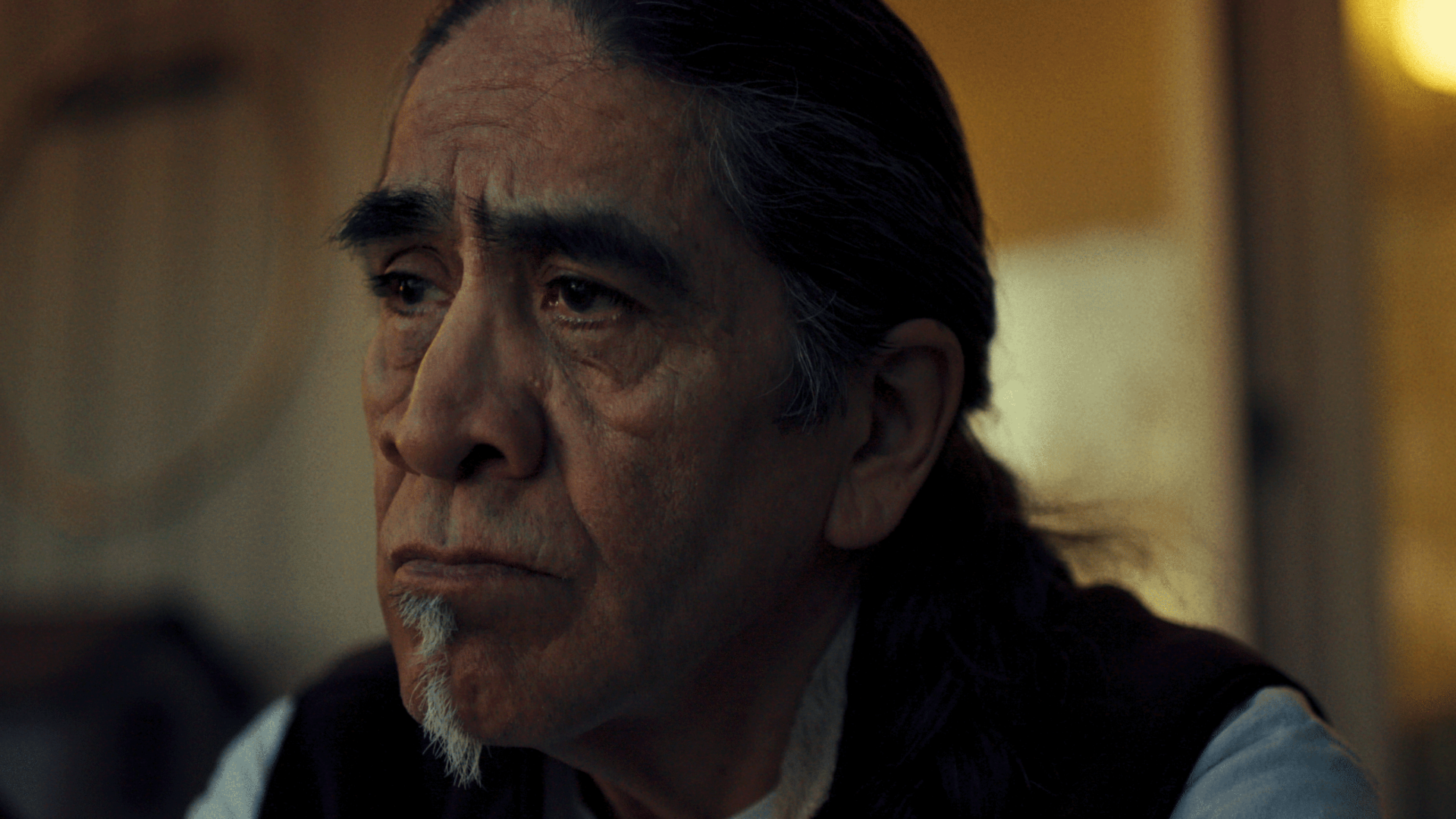Review by Désirée Guzzetta
Headline: “Sugarcane” A Hard But Necessary Watch
CW: Discussion of childhood sexual abuse, rape, and other horrific acts
The beginning of “Sugarcane,” a new documentary which premiered at the 2024 Sundance Film Festival, sets a sober tone right away in its brief history of Indian residential schools. In describing that history, it’s revealed that in 1894, the Canadian government wanted to “get rid of the Indian problem” by forcing First Nation children into segregated schools run by the Catholic Church.
Such callous disregard for Canada’s indigenous population resulted in generations of trauma, trauma which was thrust into the spotlight in 2021 with the discovery of 215 children’s bodies found in unmarked graves.
Directors Julian Brave NoiseCat and Emily Kassie, who won the U.S. Documentary Directing Award at Sundance, take great care and sensitivity in detailing what happened at St. Joseph Mission, the residential school where many of the children from the Sugarcane Reservation, including Julian’s father, Ed Archie NoiseCat, experienced horrifying abuse.
“Sugarcane” follows several individuals, each seeking to understand and/or tell the truth of what happened to them as children trapped in a school with priests who were supposed to educate and protect them, but instead wounded them deeply. Former Williams Lake First Nation Chief Rick Gilbert wants to get not just an acknowledgment from the Church about what happened, but accountability and redress. Current Chief Willie Sellars receives horrible emails blaming the First Nation for not doing a better job of protecting their children. The investigators, including Charlene Belleau and Whitney Spearing, want to help bring healing to their community while bringing out the truth to the wider world. A picture of Belleau as a child at St. Joseph shows her connection to the collective trauma of Williams Lake.
Then there’s Julian himself, who works together with Ed to get to the bottom of Ed’s own traumatic experiences at the residential school, made more difficult by the fraught relationship they have due to Ed distancing himself from his son for years. Ed’s mother won’t talk about what happened, either. It’s a cycle of shame and guilt perpetuated by the school’s priests and authorities that fractured both families and psyches.
NoiseCat and Kassie give a unique narrative structure to the document, threading news reports throughout like guideposts to the different parts of the investigation, beginning with the discovery of the 215 bodies, and including a trip to the Vatican taken by Chief Gilbert and other Indigenous people who were invited there by Pope Francis.
The directors also use archival footage of the school, which shows seemingly happy children learning and praying, a huge contrast to the stories of rape and suspected human trafficking that emerge the deeper the investigation gets. The children were further dehumanized by being assigned and referred to by number, not name, as well.
There are also contrasts in “Sugarcane,” from Julian participating in a traditional dance contest to other young people skateboarding around the same event. But the effects of the traumas of St. Joseph Mission permeate even there as the event’s announcer acknowledges the survivors of the residential schools.
One interviewee, Jean Williams, astutely observes that the “ones that were telling us it was a sin were the ones that did all the action,” and it’s frustrating to learn that so many of the abusers escaped prosecution. Scenes of inscriptions the children left on the walls of the mission’s barn are heartbreaking, and some of the stories told are chilling. For example, Rosalin Sam, a survivor, tried to report her abuse and after being given the run-around by adults eager to pass the responsibility on to someone else, she is beaten by her father when she reveals what happened. To cope, she starts drinking. She was still a child.
The last residential school closed in 1997 and there were hundreds of them across Canada and the United States, according to the film. As of the time “Sugarcane” was completed, the St. Joseph investigation was ongoing and 50 other institutions were being searched for unmarked graves.
“Sugarcane” is not an easy watch, but it’s a necessary one. NoiseCat and Kassie’s direction doesn’t linger on the survivors’ pain but doesn’t flinch from it, either. One of the more moving discussions in the film is also one we aren’t privy to see, but only hear. A shot of a dark sky with light between it and the horizon illustrates both the difficult nature of the conversation and the hope engendered by confronting and dealing with painful memories.
During his trip to the Vatican, Chief Gilbert, who has since passed away and to whom the movie is dedicated, visits the Obligata di Maria, the Order that sent priests to St. Joseph’s. He recounts the generations of his family that were abused, including himself, mother, and grandmother, and the priest he speaks with more or less attributes the abuser’s actions to mental illness. In the one scene in the film where the camera does linger, it’s on the uncomfortable silence between Chief Gilbert and the priest as Chief Gilbert waits for an apology. It takes a long time for the priest to speak, although the apology he offers rings hollow. Still, Indigenous people such as the ones who speak out in “Sugarcane” are there to make sure the silence is broken and accountability is taken.

